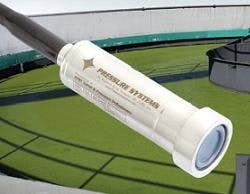Municipalities Standardize with Submersible Transducer Technology
Municipalities continually face the challenges of building new infrastructure to support growth and keeping existing facilities in proper working order. Although expansion requirements of new housing developments have leveled off with the real estate market, wastewater treatment plants are always in need of maintenance and upgrades.
One particular area that requires trouble-free operation under harsh conditions is pump control in wastewater lift stations. Liquid level measurement in a lift station is an important parameter in operation of the facility. Pump on/off control is regulated by input from level measurement instrumentation, and this is the critical link where failure can turn a quiet day into a public works nightmare.
Many municipalities are employing hydrostatic measurement technology because it has relatively low acquisition, installation and operating costs. The city of Bend, Ore., is one such municipality, and it is standardizing on hydrostatic level measurement with submersible level transducers at its facilities. With at least 80 lift stations in operation, the city treats more than 1.6 billion gal of wastewater each year.
"The hydrostatic measurement system has proven to be easy to install and trouble-free in operation," said Mark Wolter, electrical supervisor for the city.
This system of measurement typically requires a transducer to be suspended in a vertical PVC pipe in the lift station from which it transmits a 4-20 mA signal to a controller. Because the transducer receives power from the control circuit, it can continuously send data, so a record of levels can be logged.
"We use many transducers throughout our water plant to collect information and data," Wolter said. "When one stops working, we do research to find the most cost-effective replacement to meet our requirements."
Ready for harsh environment
Another feature that has proven useful is the 705's on-board lightning protection, which shields it from direct hits and voltage transients that are caused by lightning and can cripple many measurement systems.
"The transducer was recommended to us because of its price, availability and overall functionality," Wolter said. "We chose it because it was the best one for this application, and it has worked out for us."
As with most wastewater treatment challenges, there are many options to consider. Lift station control is one in which maintenance requirements, ease of installation and reliability must be balanced against cost. Hydrostatic level measurement with a submersible transducer has proven to be a good alternative.
